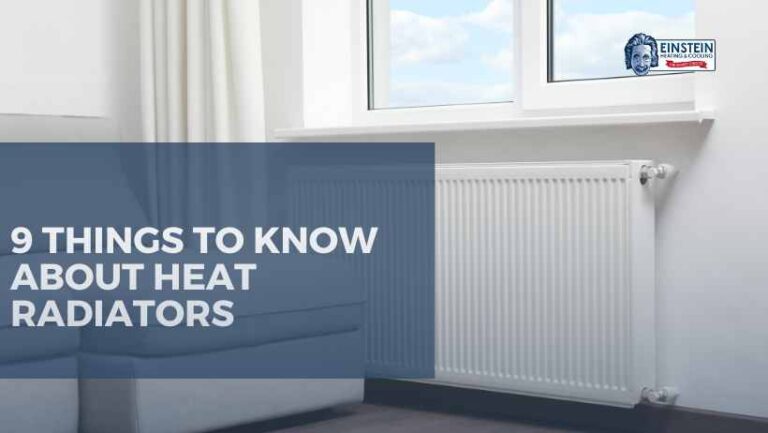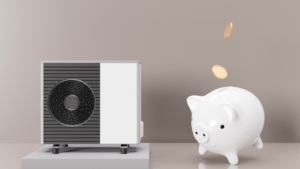Heat radiators play a crucial role in maintaining comfortable temperatures within our living and working spaces. As we delve into these devices, we’ll explore their various types, functions, and factors influencing their efficiency. This comprehensive guide aims to provide you with a detailed understanding of heat radiators, from their fundamental principles to practical considerations.
1. What is A Heat Radiator?
Introduction to Heat Radiators
Heat radiators are devices designed to transfer thermal energy from one medium to another. In the context of residential and commercial heating systems, radiators are commonly used to distribute warmth generated by a central heating source throughout a space.
Types of Heat Radiators
Convection Radiators
Convection radiators operate by circulating air through the radiator fins, creating a convection current that warms the surrounding space. These radiators are efficient and often found in modern heating systems.
Radiant Heat Radiators
Radiant heat radiators emit infrared radiation, heating objects and people directly without warming the air. These radiators are ideal for localized heating in specific areas.
Steam Radiators
Steam radiators utilize steam from a central boiler to heat the radiator, which then releases heat into the room. These systems are common in older buildings but may require maintenance to ensure optimal performance.
2. Factors Influencing Heat Radiator Efficiency
Size and Surface Area
Proper Sizing
Choosing the right size of a heat radiator is crucial for efficient heating. An undersized radiator may struggle to heat a room, while an oversized one can lead to uneven temperatures and increased energy consumption.
Surface Area Considerations
The surface area of a heat radiator directly affects its ability to transfer heat. Radiators with larger surface areas generally provide better heat dissipation.
Material Composition
Aluminum Radiators
Aluminum radiators are known for their lightweight nature and rapid heat conduction. They are resistant to corrosion, making them a durable and popular choice.
Cast Iron Radiators
Cast iron radiators have a high heat retention capacity, allowing them to emit heat even after the heating system has turned off. However, they may take longer to warm up initially.
Steel Radiators
Steel radiators strike a balance between aluminum and cast iron, offering efficient heat conduction while being relatively lightweight. They are commonly used in both residential and commercial applications.
Heat Emission Methods
Radiator Fins
The design of radiator fins significantly impacts heat emission. Fins increase the surface area, promoting better heat transfer. Regular cleaning is essential to prevent dust and debris accumulation, which can hinder heat dissipation.
Thermostatic Controls
Incorporating thermostatic controls enables users to regulate the temperature more efficiently. These controls help maintain a consistent and comfortable environment while optimizing energy usage.
Installation and Placement
Proper Installation
Correct installation by HVAC technicians is paramount for optimal heat radiator performance. Ensuring that radiators are level and well-connected to the heating system prevents issues such as air pockets and uneven heating.
Strategic Placement
Strategically placing HVAC systems in areas where heat is needed most enhances overall efficiency. Avoid placing furniture or other obstructions in front of radiators to allow for proper heat distribution.
3. Energy Efficiency and Environmental Considerations
Energy-Efficient Heating Radiators
Low Water Content Radiators
Radiators with lower water content heat up more quickly and require less energy to reach the desired temperature. This results in increased energy efficiency and reduced operating costs.
Smart Radiator Technology
Integrating smart technology into heating radiators allows for precise temperature control and scheduling. Smart thermostats and sensors contribute to energy conservation by adapting heating patterns based on occupancy and preferences.
Environmental Impact
Sustainable Materials
Opting for heat radiators made from sustainable materials contributes to environmental conservation. Manufacturers are increasingly focusing on eco-friendly options to reduce the carbon footprint associated with radiator production.
Energy Source
Considering the energy source for heating systems is crucial for environmental sustainability. Radiators connected to renewable energy sources, such as solar or geothermal systems, align with eco-friendly practices.

4. Maintenance and Troubleshooting
Bleeding Radiators
Bleeding radiators remove trapped air, ensuring that hot water or steam can circulate freely. This simple maintenance task enhances the efficiency of the entire heating system.
Cleaning and Inspecting Fins
Regularly cleaning radiator fins prevents dust buildup, which can impede heat dissipation. Additionally, inspecting fins for damage ensures optimal performance.
Troubleshooting Common Issues
Uneven Heating
Uneven heating may result from factors such as air pockets or blockages in proper ventilation. Identifying and addressing these issues promptly is essential for maintaining a comfortable indoor environment.
Noisy Radiators
Unusual noises, such as banging or hissing, may indicate issues with water flow or trapped air. Thorough troubleshooting helps identify the root cause and allows for timely repairs.
5. Future Trends in Heat Radiator Technology
Integration with Renewable Energy
Solar-Powered Radiators
Advancements in solar technology may lead to the development of radiators directly powered by solar energy. This innovation could reduce dependence on traditional heating sources and further promote sustainability.
Smart and Connected Radiators
Internet of Things (IoT) Integration
The integration of heating radiators with IoT technology is on the rise. This allows users to control and monitor heating systems remotely, enhancing convenience and energy efficiency.
Continued Material Innovations
Nanotechnology Applications
The incorporation of nanotechnology in radiator design could result in materials with improved heat conduction properties, leading to more efficient and compact heating solutions.
6. Cost Considerations and Budget-Friendly Options
Initial Investment vs. Long-Term Savings
Upfront Costs
While some heat radiators may have a higher initial cost, it’s essential to consider the long-term savings they can offer in terms of energy efficiency. Investing in a more efficient radiator can lead to lower monthly utility bills, making it a cost-effective choice over time.
Return on Investment
Evaluate the return on investment by comparing the initial cost of the radiator with the expected energy savings. This analysis helps determine the payback period and overall financial benefits of choosing a particular heat radiator.
Energy-Efficient Design and Technologies
Low-Energy Consumption Radiators
Modern heat radiators often incorporate design features and technologies aimed at minimizing energy consumption. Look for radiators with energy-efficient labels or certifications to ensure they meet industry standards for performance.
Variable Heat Output
Radiators with variable heat output settings provide users with greater control over energy usage. Adjusting the heat output based on seasonal needs or room occupancy can result in significant energy savings.
7. Aesthetics and Design Integration
Stylish Radiator Designs
Contemporary Designs
Manufacturers are now offering radiators in various styles and finishes to complement diverse interior design preferences. From sleek, modern designs to classic and ornate options, there’s a radiator to suit every aesthetic.
Vertical vs. Horizontal Radiators
Consider the available space and design layout when choosing between vertical and horizontal radiator configurations. Vertical radiators can be a stylish and space-saving choice, while horizontal radiators may fit well under windows.
Integration with Home Decor
Customization Options
Radiators that allow for customization, such as color options or the ability to add covers, enable homeowners to seamlessly integrate heating solutions into their existing decor. This ensures that the heating system becomes a harmonious part of the overall design.
Concealed Radiators
For those who prefer a minimalist look, concealed radiators or those integrated into furniture provide a discreet heating solution. This design approach maintains the aesthetics of the space without compromising on warmth.
8. Local Regulations and Building Codes
Compliance with Building Standards
Local Building Codes
Before installing heating radiators, ensure compliance with local building codes and regulations. Understanding these requirements helps prevent potential issues during inspections and ensures the safety and efficiency of the heating system.
Environmental Standards
Some regions have specific environmental standards for heating systems. Choosing radiators that meet or exceed these standards contributes to environmental conservation and may even qualify for eco-friendly certifications.
Energy Efficiency Rebates and Incentives
Government Incentive Programs
Explore available government incentive programs or rebates for energy-efficient heating systems. Taking advantage of these programs can offset the initial cost of purchasing and installing a new heat radiator.
9. Consumer Reviews and Recommendations
Researching Product Reviews
Online Platforms
Before making a final decision, explore online platforms for consumer reviews of specific heat radiator models and brands. Real-world experiences and feedback can provide valuable insights into the performance and durability of different radiators.
Recommendations from Professionals
Consulting with heating professionals, such as HVAC technicians or energy auditors, can offer expert advice on selecting the most suitable heating radiator for a particular space. Their recommendations may consider factors such as insulation levels, room size, and local climate conditions.
Conclusion
As we conclude our exploration of heat radiators, it becomes evident that these devices are not only essential for maintaining warmth but also evolving to meet the demands of energy efficiency and sustainability. By understanding the factors influencing heat radiator efficiency, asking questions from reputable HVAC technicians from Einstein Heating and Cooling, and staying informed about emerging trends, we can make informed decisions to create comfortable, eco-friendly living and working environments.








